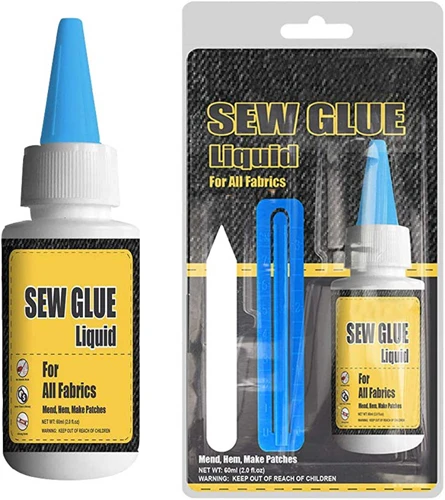Embarking on a DIY project often involves the challenge of adhering materials together for durability and aesthetics. Specifically, when it comes to gluing vinyl, understanding the right techniques and materials is crucial for a successful outcome. Whether you’re repairing upholstery, crafting, or working on home improvements, this guide will navigate you through the nuances of how to glue vinyl for lasting results.
Understanding Vinyl Glue
What is Vinyl Glue?
When we talk about vinyl adhesive, we’re referring to a specialized product designed to create a strong bond specifically with vinyl materials. This adhesive caters to the unique properties of vinyl, ensuring a secure and flexible hold that can withstand various conditions, including moisture and temperature changes.
Types of Vinyl Fabric Glue
The market offers a range of adhesives, each formulated to meet specific requirements. Some common types include acrylic-based, epoxy, and polyurethane glues, each possessing distinct characteristics. Acrylic-based glues offer quick drying times, while epoxy variants provide a robust bond, and polyurethanes are known for their flexibility and water resistance.
How to Glue Vinyl
Preparation for Gluing Vinyl
Starting on the right foot involves meticulous preparation of the vinyl surfaces. Cleanliness is paramount; any dust, oil, or debris can compromise the adhesive’s effectiveness. A simple wipe down with a suitable cleaner can make a world of difference in the bonding process.
Gluing Vinyl to Vinyl
When it comes to uniting two vinyl surfaces, selecting the appropriate adhesive is critical. Opt for a product specifically labeled for vinyl-to-vinyl applications to ensure compatibility and a secure bond that mimics the vinyl’s inherent flexibility.
How to Bond Vinyl to Vinyl
Bonding vinyl to vinyl requires precision and patience. Applying the adhesive evenly and allowing adequate contact time is essential. The bond formed will be as strong as the preparation and application steps allow, so take your time and follow the guidelines closely.
Step-by-Step Guide for Gluing Vinyl Together
Materials Required
- Vinyl adhesive
- Clean cloth or sponge
- Protective gloves
- Clamps or weights (optional)
Surface Preparation
Begin with a pristine surface. Any contaminants on the vinyl can prevent the adhesive from adhering correctly. Use a cleaner that won’t leave residues and allow the surfaces to dry completely before proceeding.
Applying the Adhesive
Spread the vinyl adhesive uniformly across the surface, using a tool that won’t introduce air bubbles. Ensure edge-to-edge coverage to avoid weak spots in the bond.
Bonding and Pressing
Join the two vinyl pieces carefully, aligning them to prevent misplacement. Press firmly across the surface to encourage a strong bond. For larger projects, using clamps or weights can maintain pressure during the drying process.
Drying and Curing Time
Adhesives have varying drying times. It’s important to check the manufacturer’s recommendations and allow the vinyl bond to cure fully before handling or stressing the joined surfaces.
Troubleshooting Common Issues
Repairing Small Vinyl Tears
For minor tears, a thin layer of vinyl adhesive applied to the damaged area can mend the material. Ensure the edges of the tear are pressed together neatly during the healing process.
Fixing Larger Vinyl Rips
Larger tears might require a vinyl patch along with the adhesive. Cut a piece of matching vinyl slightly larger than the rip, apply glue to both surfaces, and place the patch over the damaged area, smoothing out any air bubbles.
Maintenance and Aftercare
Cleaning Up Excess Glue
Once the vinyl pieces are securely bonded, any excess adhesive should be wiped away promptly with a damp cloth. This step will ensure a clean finish and prevent any residue from hardening on the surface.
Long-Term Care for Glued Vinyl Surfaces
To maintain the integrity of the bond, it’s important to treat the glued vinyl surfaces with care. Avoid harsh chemicals or abrasive cleaners that could weaken the adhesive over time.
Choosing the Best Vinyl Adhesive for Your Project
The success of your project hinges on selecting the right vinyl adhesive. Consider the specific requirements of your task, the environmental factors it will face, and the flexibility needed. Researching products and reading reviews can lead you to the ideal adhesive choice.
If you’re embarking on a DIY project and need to know the best ways to work with vinyl, our comprehensive guides have got you covered! For those working with fabric, our article on how to glue vinyl fabric will provide you with tips and techniques to ensure a strong bond. If your project involves cardboard, you’ll want to check out our insights on how to glue cardboard for a durable finish. And for anyone looking to combine vinyl with wood, our step-by-step instructions in how to glue vinyl to wood will help you achieve a professional-looking result. Whatever your project may be, we have the information you need to glue vinyl effectively.
Conclusion: Tips for Successful Vinyl Adhesion
Gluing vinyl is a task that requires attention to detail and the right materials. By following the steps outlined, from preparation to aftercare, and selecting the appropriate vinyl fabric glue, your DIY or repair project will stand the test of time. Remember, the key to how to glue vinyl is in the preparation, application, and patience for the bond to cure.

